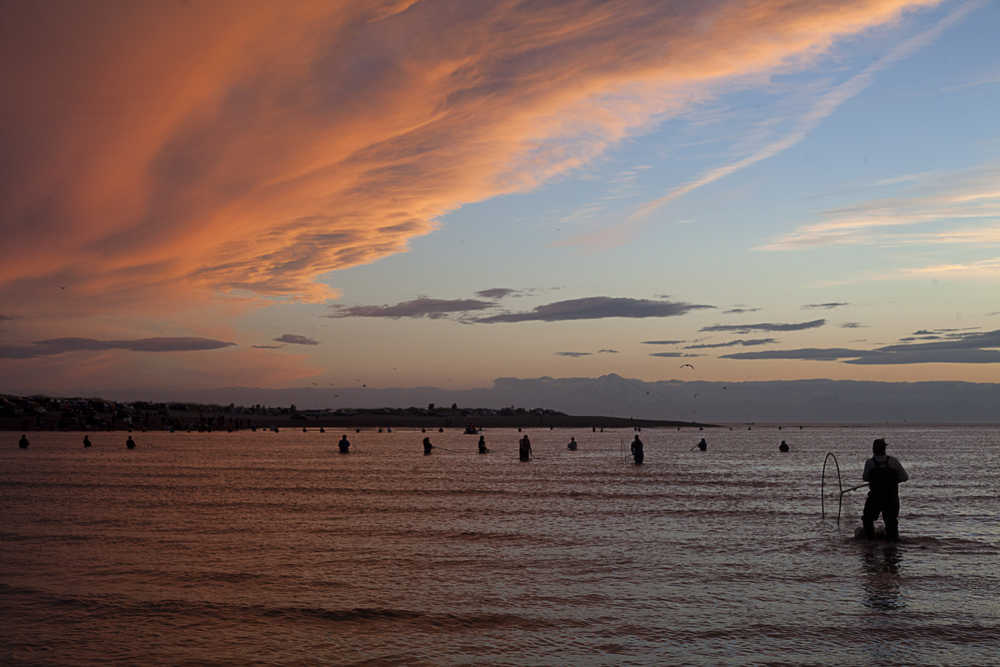They’ve tried bringing the drift fleet closer to the Kasilof, the commercial setnet fishery was opened early, and now managers are adding newly liberalized personal-use dipnetters and sport anglers to the mix in an attempt to slow the rush of Kasilof-bound sockeye salmon. While it is unclear how strong the final escapement will be, Alaska Department of Fish and Game biologists said the fish were continuing show up in large numbers in the 17-mile glacial river.
Managers expanded the area available to dipnetters while upping the bag and possession limits in the sport fishery.
With temperatures forecasted to reach the 70s, a federal holiday and the newly liberalized regulations starting today, the two user groups are poised to make a dent in a run that is 4,000 fish short of making its escapement goal with more than a month left to count.
In the sport fishery, anglers may keep six sockeye per day with twelve in possession through August 7, while dipnetters will be allowed to fish from the mouth of the river to the Sterling Highway Bridge.
Dipnetting from a boat is allowed from the Fish and Game markers on the beaches upstream to Fish and Game markers about three miles upstream.
While the area for dipnetters to use has expanded, Fish and Game area management biologist Robert Begich said personal-use fishers should be mindful of the boundaries at the mouth of the Kasilof River which mark the area of beach available to fishing.
“When we get large crowds, sometimes they spread out down the beach into areas that are actually closed to dipnetting,” Begich said. “This expansion should help because people can go upriver.”
A map can be found on page 15 of the sportfishing regulation book for Southcentral Alaska.
Similar measures were taken during the 2013 season, though Begich said they were implemented about a week later in the season. During 2013, more than 489,000 Kasilof sockeye salmon avoided being caught and escaped into the river, about 100,000 more than the upper end of the river’s escapement goal.
Commercial area biologist Pat Shields said the strong showing of sockeye salmon this early in the season wasn’t necessarily an indicator of the size of the run which Fish and Game forecasted to be about 1.1 million fish.
“It is possible this run could only be 1 million or 900,000 but for it to be that, it would have to be really early — six to seven days early,” Shields said. We would say it looks like it’s going to be above forecast.”
Rashah McChesney can be reached at rashah.mcchesney@peninsulaclarion.com

